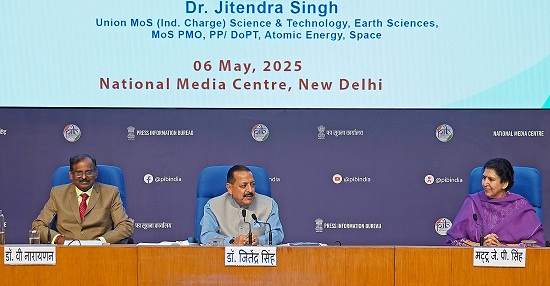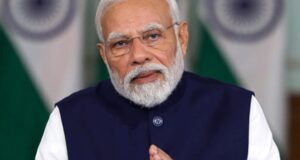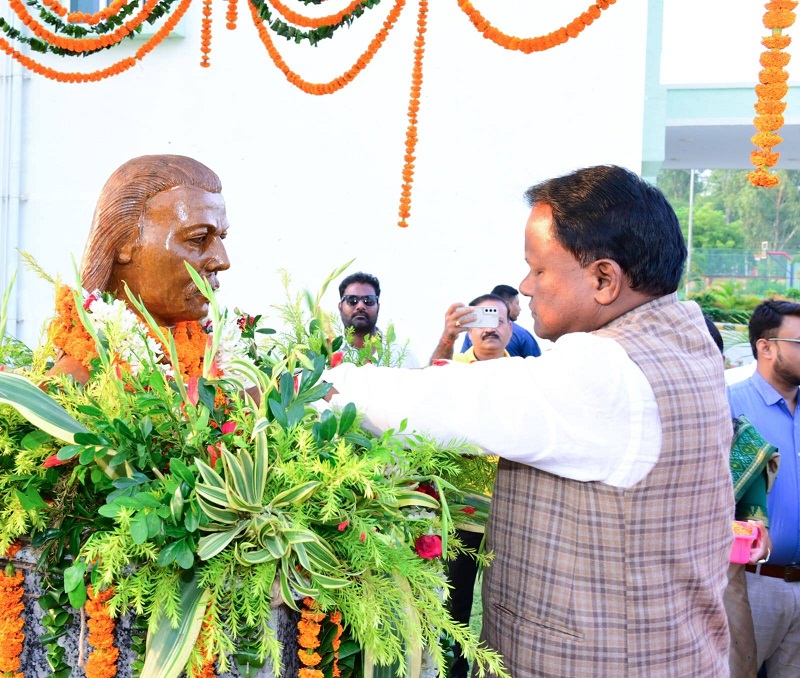NEW DELHI, May 6 : India’s first human Space mission “Gaganyaan” programme has entered its final phase, with the first human spaceflight now scheduled for the first quarter of 2027.
Disclosing this while speaking at a media interaction at National Media Centre here today, Union Minister of State (Independent Charge) for Science and Technology; Earth Sciences and Minister of State for PMO, Department of Atomic Energy, Department of Space, Personnel, Public Grievances, and Pensions, Dr. Jitendra Singh provided detailed updates on the mission’s current status, technological progress, and the broader economic dividends emerging from India’s cost-effective space programme.ISRO and Secretary, Department of Space, Dr V. Narayanan also accompanied the Minister
Dr. Jitendra Singh said, the successful completion of the TV-D1 mission and the first uncrewed Test Vehicle Abort Mission earlier this year have laid a strong foundation for the upcoming test schedule. The second Test Vehicle mission (TV-D2) is slated for later in 2025, followed by the uncrewed orbital flights of Gaganyaan. These milestones will culminate in India’s maiden human spaceflight in 2027, launching Indian astronauts into orbit aboard an Indian rocket from Indian soil.
Calling it a “historic mission,” Dr. Jitendra Singh underlined that the Gaganyaan programme goes far beyond scientific achievement. “It represents India’s rise as a global space power built on indigenous technology, fiscal prudence, and visionary political leadership,” he said. He also recalled that Prime Minister Narendra Modi had laid out India’s long-term ambitions in space, including setting up the Bharatiya Antariksha Station by 2035 and sending the first Indian to the Moon by 2040.
The Human-rated LVM3 vehicle, the Crew Escape System, and the Crew Module and Service Module are all undergoing final stages of testing and integration. He confirmed that the uncrewed orbital Gaganyaan mission is on track for launch later this year, with recovery trials already conducted with the Indian Navy and more sea recovery simulations planned.
The Chairman too echoed the view that Gaganyaan is catalysing India’s emergence as a self-reliant space power, inspiring a new generation of scientists, engineers, and entrepreneurs. With the crewed mission expected in 2026, India is poised to join an elite group of nations that have independently developed the capability for human spaceflight.
As Gaganyaan advances with focused precision, it serves not just as a leap in scientific capability but as a powerful symbol of India’s long-term economic and strategic aspirations in space.
 Odisha news today, Latest Oriya News Bhubaneswar Online Odia news Portal
Odisha news today, Latest Oriya News Bhubaneswar Online Odia news Portal




